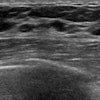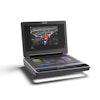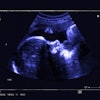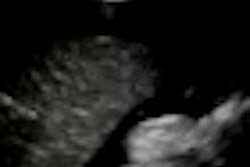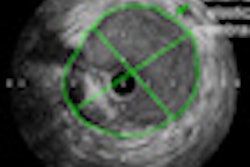The current emergency ultrasound training standard that relies on the number of exams residents have performed before they are considered competent in a technique may not be optimal in all cases, according to research from Beaumont Hospital in Royal Oak, MI.
In a prospective study that evaluated the ability of emergency medicine residents to interpret five core emergency ultrasound clinical applications, a study team found that the current recommendation of 25 scans per application may not be necessary for right-upper quadrant and abdominal aorta studies.
"Current training guidelines need further investigation and potentially need to be changed and expanded," Amit Bahl, MD, told AuntMinnie.com. "There are many ways to train residents, and I am interested in finding the best way to promote learning and help train competent emergency physicians."
He presented the research at the American College of Emergency Physicians (ACEP) Research Forum in Las Vegas in September.
Bahl, who is responsible for training emergency medicine residents in emergency ultrasound at his institution, sought to evaluate the correlation between the number of previously performed ultrasound exams by residents with their subsequent interpretation accuracy of standardized ultrasound exams.
The researchers enrolled 36 emergency medicine residents in the study, which was performed in 2009 and 2010 via a standardized multiple-choice annual examination of 90 randomized ultrasound video clips. The video clips focused on five core ultrasound applications, including right-upper quadrant, cardiac, first-trimester pregnancy, abdominal aorta, and focused abdominal sonography in trauma (FAST).
The researchers then employed statistical analysis to discover the relationship between examination scores and the number of previously completed scans at the time of their test.
The 36 residents -- who only took the test once -- included 15 with a postgraduate level of one year, eight with a postgraduate level of two years, and 13 with a postgraduate level of three years. They had previously completed an average of 16 right-upper quadrant scans, 11 cardiac scans, four first-trimester pregnancy scans, 13 abdominal aorta scans, and 23 FAST scans.
The researchers found that the residents produced accurate interpretations in 71% of right-upper quadrant scans, 71% of cardiac scans, 52% of first-trimester pregnancy scans, 68% of abdominal aorta scans, and 87% of FAST scans.
From statistical analysis, they found a statistically significant linear relationship between the number of scans performed and the interpretation accuracy on the right-upper quadrant and abdominal aorta scans (p < 0.0001).
They also found that the odds ratio of a right-upper quadrant score greater than 71% increased by a factor of five for residents who had performed more than 25 scans when compared to those who had performed 25 or less. However, the odds ratio increased by a factor of 13 for residents who had performed more than 16 right-upper quadrant scans when compared to those who had performed 16 or less, according to the researchers.
As for the abdominal aorta scans, the odds ratio for a score greater than 68% rose by a factor of 11 for residents who had performed more than 25 abdominal aorta scans when compared to those who had performed 25 or less. The odds ratio increased by a factor of 13, though, for residents who had performed more than 13 abdominal aorta scans when compared to those who had performed 13 or less, the researchers found.
"It seems that adequate interpretation for these scans may be achieved at a level less than the 25 recommended," Bahl said.
The researchers did not find any significant relationship between the number of scans performed and the scores for cardiac, first-trimester pregnancy, or FAST exams.
The findings for the right-upper quadrant scans were surprising: Bahl had anticipated that the ideal number for these scans could be more than 25 due to their complex nature.
"It is important to recognize that a limitation of the study is that it does not account for technical training -- just interpretation ability," Bahl said. "I think if both were combined, it would be evident that technical training for the right-upper scan would be more complex and residents would need more experience to achieve adequate training."
Although a relationship was found between the number of scans performed and interpretation accuracy on the core emergency ultrasound applications, the data suggest that adequate resident training may be achieved using fewer than the guideline of 25 scans per application, the researchers concluded. They also noted that the number of scans may vary depending on the specific application.
By Erik L. Ridley
AuntMinnie.com staff writer
October 28, 2010
Related Reading
Point-of-care ultrasound useful for fracture diagnosis, July 7, 2010
Paramedics can do ultrasonography in a moving ambulance: study, June 24, 2010
FAST recommended first for kids with blunt abdominal trauma, May 7, 2010
Radiologists retain dominance of emergency US, x-ray exams, November 26, 2007
Experience beats speed in emergency FAST training, June 2, 2004
Copyright © 2010 AuntMinnie.com


